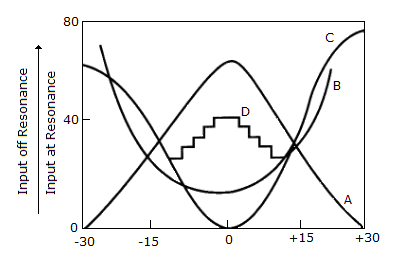ECE :: Radio Receivers
-
The selectivity curve of a standard receiver is represented by

-
Which of the following statement about the advantage of phase discriminator over the slope detector is false?
-
Fidelity of a receiver represents
-
Which of the following produces upper and lower side frequencies?
-
The passband of the tuned circuits of a radio receiver should be equal to
-
In a broadcast superheterodynes receiver having no RF amplifier, the loaded Q of the antenna coupling circuit is 100. If the intermediate frequency is 455 kHz. In receivers operating upto the limit of shortwave broadcasting the local oscillator often used is
-
RF amplifiers are used in radio receivers for
-
In an FM signal, the power
-
An unmodulated voltage 10 V effective is applied to a dioxide detector in which load resistance is 4 x 10-5 ohms. A micrometer shows that the rectified DC current in this resistance is 30 A. The efficiency of detection is
-
Selectivity varies with receiving frequency, frequency is raised.
|
A.
the sensitivity expressed in terms of voltage that must be applied to the receiver input to give a standard output
|
|
B.
the extent to which the receiver is capable of distinguishing between the desired signal and other frequencies
|
|
C.
the variation of the output with the modulation frequency when the output impedance is a resistance
|
|
D.
none of the above
|


 Whatsapp
Whatsapp
 Facebook
Facebook

